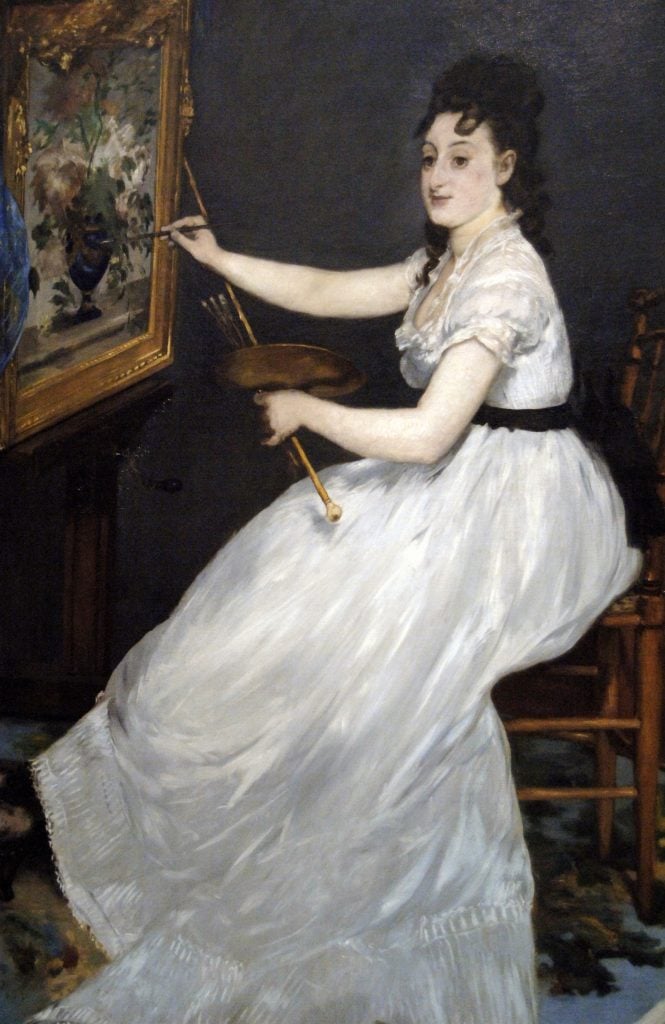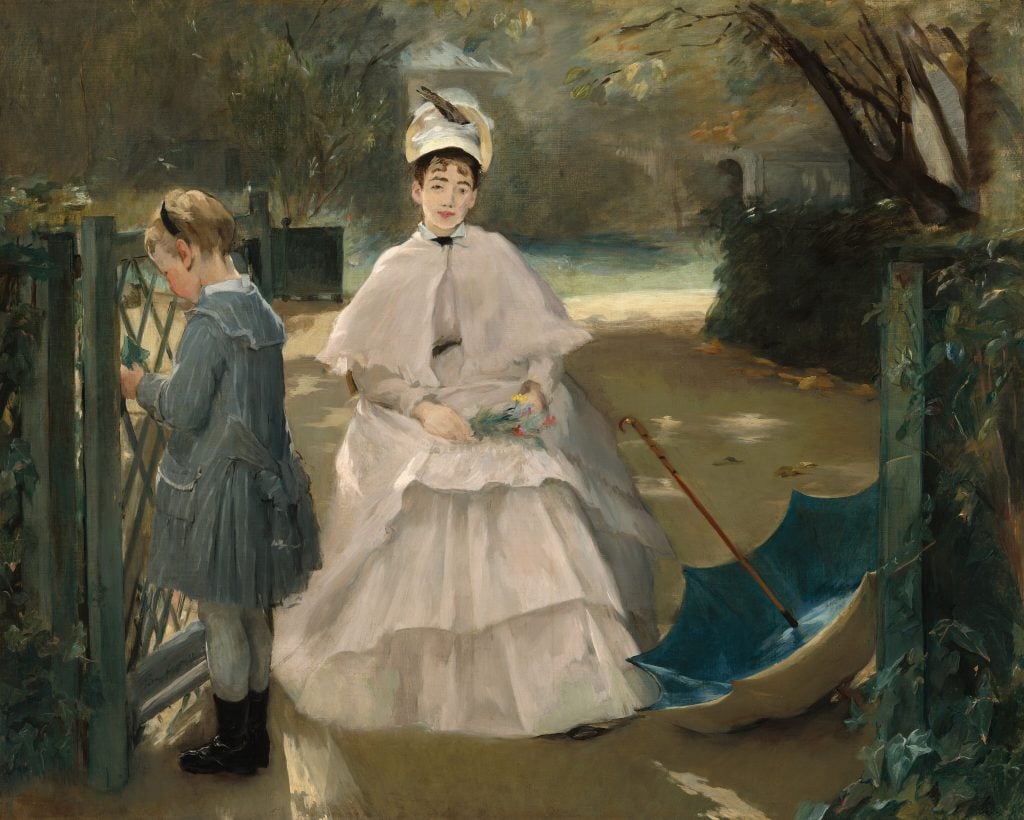Art World
Art Bites: The Face Manet Repainted 40 Times
Manet’s portrait of his pupil Eva Gonzalès is one of his best known works—and the painter toiled away at it.

Manet’s portrait of his pupil Eva Gonzalès is one of his best known works—and the painter toiled away at it.

Tim Brinkhof

Eva Gonzalès was not only lucky enough to be born in Paris in the 1840s, at a time when the city’s art world was experiencing a profound artistic revolution, but to be born to parents who allowed her to participate in that revolution. The daughter of a Spanish writer and Belgian musician, she started taking painting lessons from Charles Chaplin (no relation to the English comic actor).
An esteemed academic painter, Chaplin taught Gonzalès the fundamentals laid out by the Old Masters of previous centuries. However, it wasn’t until she met the Impressionist pioneer Édouard Manet during a visit to another painter’s studio in 1869 that her career really took off.

Eva Gonzalès, Nanny and Child (1877–1878). Photo: Heritage Art/Heritage Images via Getty Images.
Struck by her beauty rather than her painting skills, Manet made her his model before she could become his pupil, joining a group of other young, aspiring, and varyingly successful female artists, including Berthe Morisot. Manet, who had previously shocked Parisian audiences with paintings like Olympia and Le Déjeuner sur l’herbe, quickly set to work on her portrait.
Unlike the women in these two paintings, whose casual, un-mythologized nudity became the subject of extensive controversy, Manet painted Gonzalès clothed, in a large white dress, and working on a painting of her own.
The 1870 portrait is further indicative of his Impressionist style. Where academic paintings of the period often come across as static and staged, Manet was interested in capturing split-second actions, expressions, and gestures. Here, he paints his pupil as she turns from her canvas to the viewer, her eyes darting to something or someone out of view.
Although she fared better with critics, Morisot was reportedly jealous of Gonzalès’s relationship with Manet, and the many hours she spent sitting for his portraits. Manet didn’t take his time because he enjoyed spending time with Gonzalès—though they were rumored to have an affair—but because he was dissatisfied with his work.

Édouard Manet, Profile of Eva Gonzales turned to the left (ca. 1870). Photo: Heritage Art/Heritage Images via Getty Images.
Ahead of a 2022 exhibition, the National Gallery in London conducted x-rays of the painting and found Manet reworked the image more than 40 times before giving up in frustration. The underpainting shows he struggled especially Gonzalès’s face and pose, cycling through several positions before settling on the one we know today. He also made changes to the fabric and furniture, background details which, in his eyes, were anything but trivial.
This wasn’t the only time Manet had a tough time painting Gonzalès; he once waited until the very last day to submit a deceptively simplistic pencil drawing of her to an exhibition.
Adopting her teacher’s Impressionist style, Gonzalès went on to show her work at the Galerie Georges Petit and the offices of art review magazine L’Art. She died in childbirth at age 34 in 1883, five days after the death of Manet, who was 51. Her legacy survived her passing, earning exhibitions at the Salons de La Vie Moderne in 1885 and the Salon d’Automne in 1907.
What’s the deal with Leonardo’s harpsichord-viola? Why were Impressionists obsessed with the color purple? Art Bites brings you a surprising fact, lesser-known anecdote, or curious event from art history.